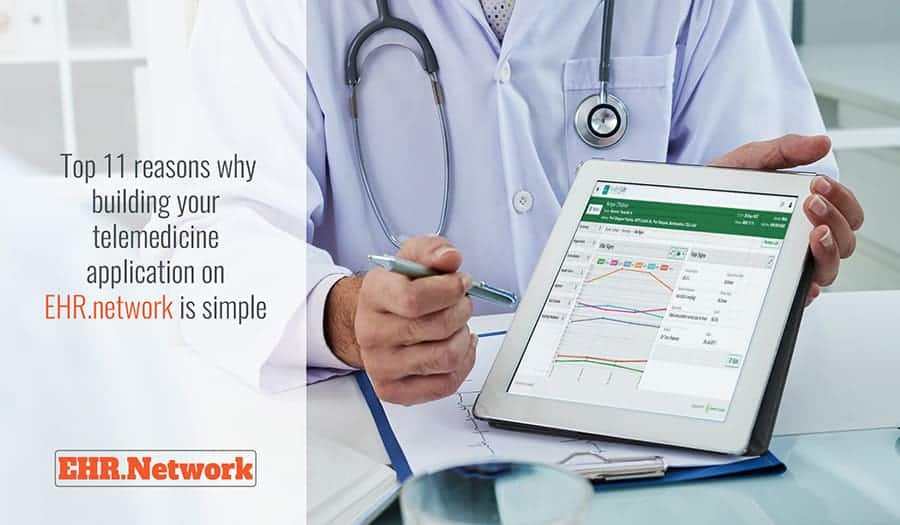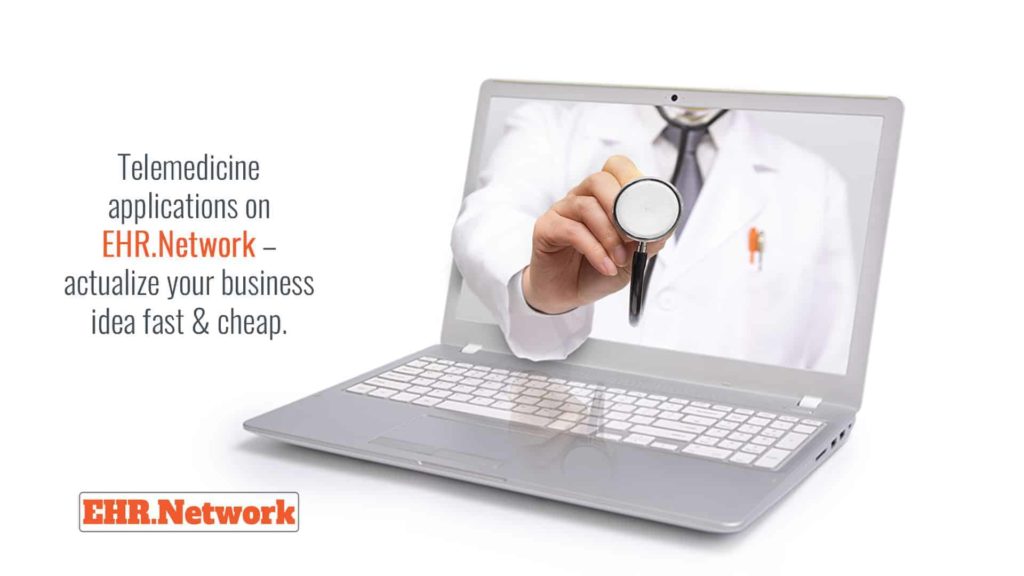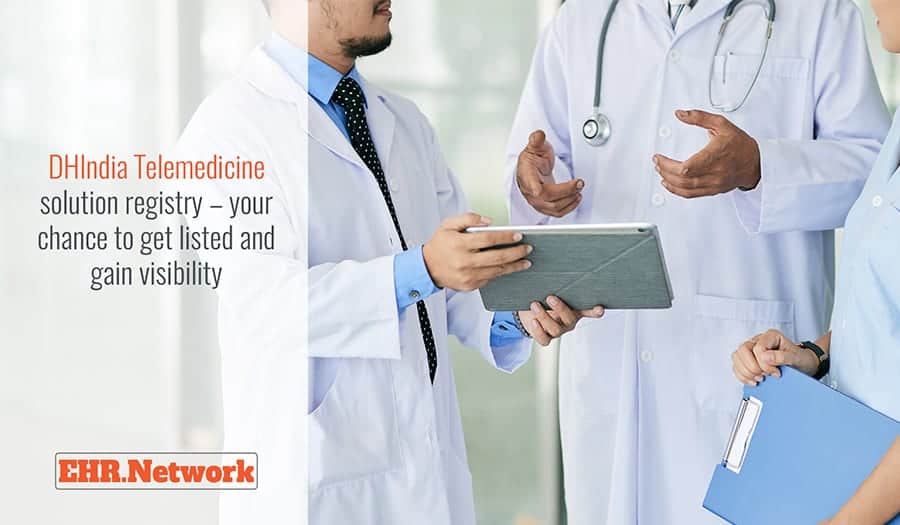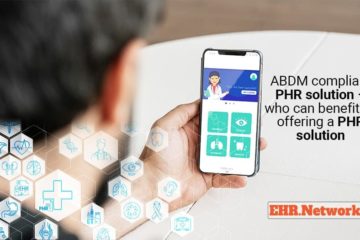Top 11 reasons why building your telemedicine application on EHR.network is simple

The time has never been better for telemedicine applications in India. The release of Telemedicine Practice Guidelines(TPG) has opened up a huge opportunity for healthcare application developers, as there is a sudden demand for modern telemedicine applications.
On march 25th 2020, the Board of Governors in supersession of the Medical Council of India released the TPG for enabling Registered Medical Practitioners(RMP) to provide healthcare using Telemedicine. This is a landmark in Indian Healthcare as the lack of regulations had kept many doctors from telemedicine practice. Problems of the scale & nature of the Covid19 pandemic can only be managed by use of technology to improve reach & maintain safe distance for protecting practitioners.
The two key components of any telemedicine application are a standards compliant shared EHR system and an appropriate communication medium. Communication mediums can vary from simple SMS and chat applications to advanced video conferencing solutions. This choice is often left to the comfort of the Doctor and the patient. Many GPs find the everyday tools such as SMS & Whatsapp comfortable to work with. Advanced requirements such as post surgical monitoring and mental healthcare may require video conferencing tools that can connect multiple persons.
However, when it comes to choosing the shared EHR for record keeping & seamless information sharing, regulations have an important role to play. Things like standards compliance, privacy, security etc become very important factors in the choice.
In this context, here are the top reasons why you should choose EHR.Network as the platform to craft your solution.
1.Patient identification
TPG requires the RMP to identify and document details of the patient in teleconsult encounters. EHR.Network has a patient registry service that has been designed as per the EHR standards and FHIR Patient resource.
Your telemedicine application can use this service to manage details about the patients easily just using our APIs. The patient may be given the option to keep this information updated through their login. The RMP will be able to view and validate the patient details before starting the consultation.
2.Caregiver identification
As per the TPG, if a caregiver is attending the consultation on behalf of the patient, both the patient and caregiver has to be identified and documented. This can be done in different ways in EHR.Network – either as a person related to the patient or at the encounter level only. Again you just have to use the appropriate APIs to build this into your telemedicine applications.
We follow the MDDS standards and FHIR person resource profile for this
3.RMP identification
According to the TPG, the Registered Medical Practitioner is required to identify themselves before initiating a teleconsult. This is enabled by the practitioner registry in our EHR platform. This can be used to record the details of the doctor when they are registered in the application.
The doctor can keep his/her details updated once they are logged in. The patient/caregiver may be given the option to view this information from the patient app. Again you require nothing other than the platform APIs for this entire functionality.
In case you want to store information such as the list of services, charges or time, you can easily extend the platform with application specific services.
4.Recording of consent
The TPG makes it mandatory on the RMPs to collect and maintain consent from the patient for every teleconsult. Our platform enables this at an encounter level where the scanned document can be attached along with the details of the consent.
Again this can be achieved by your telemedicine application just using the platform APIs. This may be viewed by the patient and RMP at any time in the future.
5.Clinical information management for telemedicine applications
EHR.network supports an extensive collection of clinical data sets right from simple vitals to more sophisticated observations & examinations. If required, these can be managed and extended based on the specific requirements of your application. So storage of clinical data during consultation is achieved easily using the OpenEHR CDR of the platform.
Further the entire clinical data can be created, updated, deleted and read through a very small set of REST APIs. This simplifies the development of your application. Patients may also be given access to their EHR through the patient app for complete transparency.
To improve the classification and management of clinical data you may use our Virtual folder service. The Virtual folder enables the classification of a person’s EHR into encounters, episodes of care etc. for easy visualization in your telemedicine application UI.
6.Tools to help with medico-legal issues
EHR.Network has many tools that are designed to protect patients, RMPs and caregivers from medico-legal issues.
All clinical information managed by EHR.Network is versioned. This ensures that there is a trail of changes to the information maintained. Further the EHR.Network has extensive audit capability that logs every transaction carried out on the platform with details of time, user, organization and patient. Audit covers both clinical and demographic information.
7.Authentication & authorization for your telemedicine application
The platform provides authentication & authorization as a service for your applications. This involves multiple constructs such as organizations, users, patients, roles and professions that allow you to implement the required access controls in your telemedicine application. We take care of user logins, password management and authorization on your behalf.
You can inherit the auth framework of the platform to also control the behavior of your application, while the platform ensures that any user gets access to only authorized resources.
8.Personal data privacy in your telemedicine application
TPG lays a lot of stress on the privacy of personal data and so it is very important to ensure that telemedicine applications take this aspect very seriously.
EHR.Network is designed along the Privacy By Design principle and so the concept of data privacy is built into the core of our design. The services on the platform are federated and use separate databases. So the demographic information and EHR of a person are segregated into multiple services and databases to minimize the impact of any data breach. On top of these services, we have created complex call flows that use multiple backend services to construct the data sets required by application screens at runtime. These call flows are exposed as simple APIs to abstract this complexity away from you and enable you to focus on your users.
9.Security for your telemedicine application
Any cloud based information solution should take security very seriously. With this in mind, we have implemented a large number of security features to manage the risks that arise on the Internet. It has been tested against the OWASP Top 10 Web Application Security Risks and certified for deployment for the Karnataka Mental Health Management System in the state data centre. We run the same code on our public platform so that your applications get the same level of security.
All out APIs are exposed through a gateway that implements security features such as API keys, rate limiting, bot detection etc. Apart from the 256 bit TLS encryption of all traffic from applications to our APIs, we also implement features such as password hashing at the UI, password policy and login failure limits. You can go head and build your application fast and still be guaranteed of them being secure.
10.Performance & scalability for your telemedicine application
Scalability of our cloud platform has come from the tough design choices that we have made. We believe in the cloud native paradigm and services architecture. Our platform is designed as a set of simple services that work together to deliver complex functionalities. The services operate stateless to support clustering.
This architecture allows us to scale our application as required across multiple nodes and maintain consistent performance. Your applications can scale as your user base grows without worrying about the back end performance.
11.Common reusable knowledge resources
EHR.Network includes an array of healthcare knowledge resources that can offer a rich experience to your users. These include SNOMED CT terminology, SNOMED to ICD 10 map, Indian drug database and a drug information service. You can easily integrate these services via REST APIs to make your application feature rich. It will also ensure that the clinical data is standards compliant, computable and interoperable.
As you can see from the above list, EHR.Network is the top choice for you to build a telemedicine application in a short time and reach the market. Our estimates have shown that EHR.Network enables healthcare applications to be developed in less than half the time and at 50% cost as compared to building everything from scratch.
So go ahead and build your business with us.
Learn more
- Explore case studies
- Read documentation
- Write to us
- Call us on +91 63609 97311





0 Comments